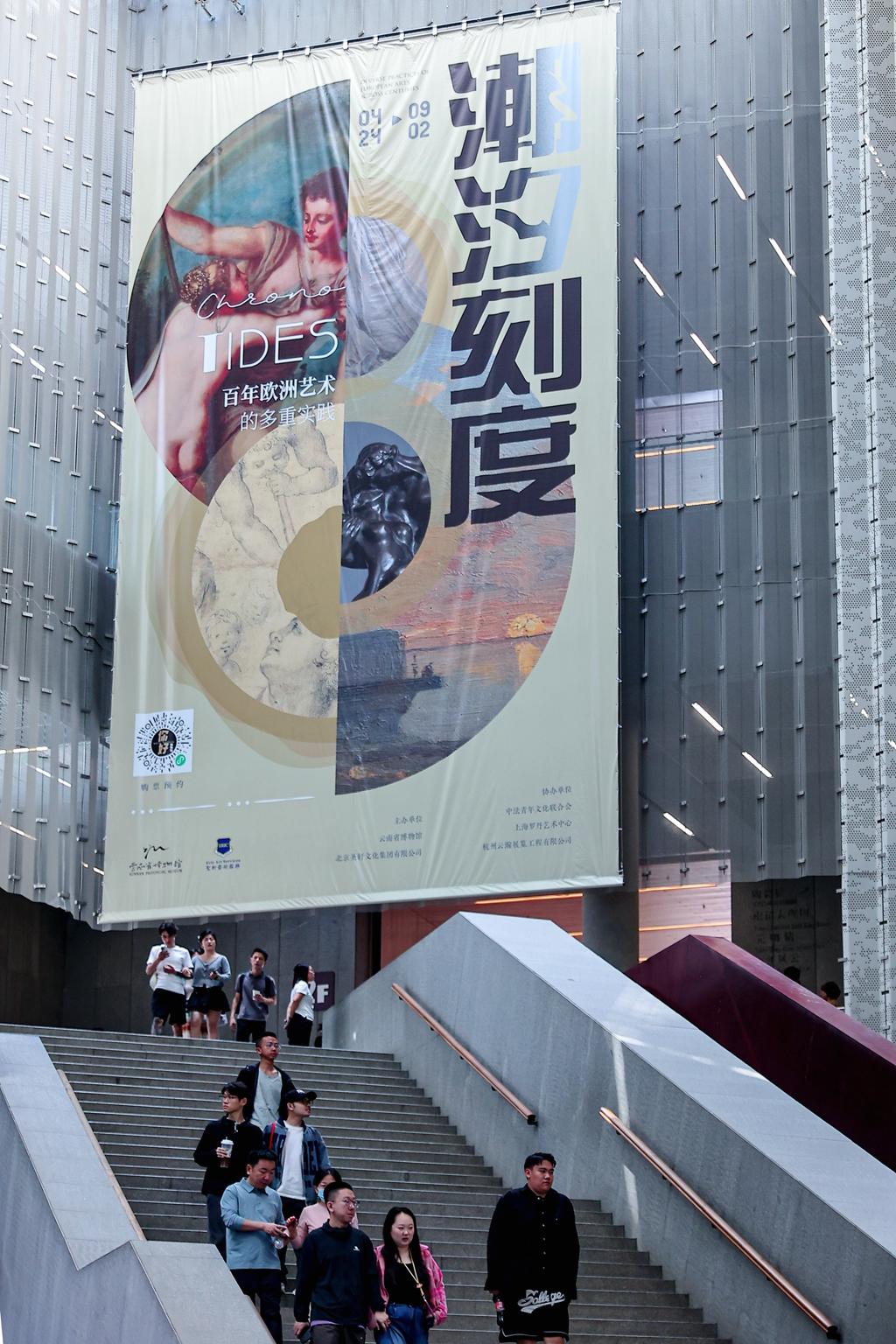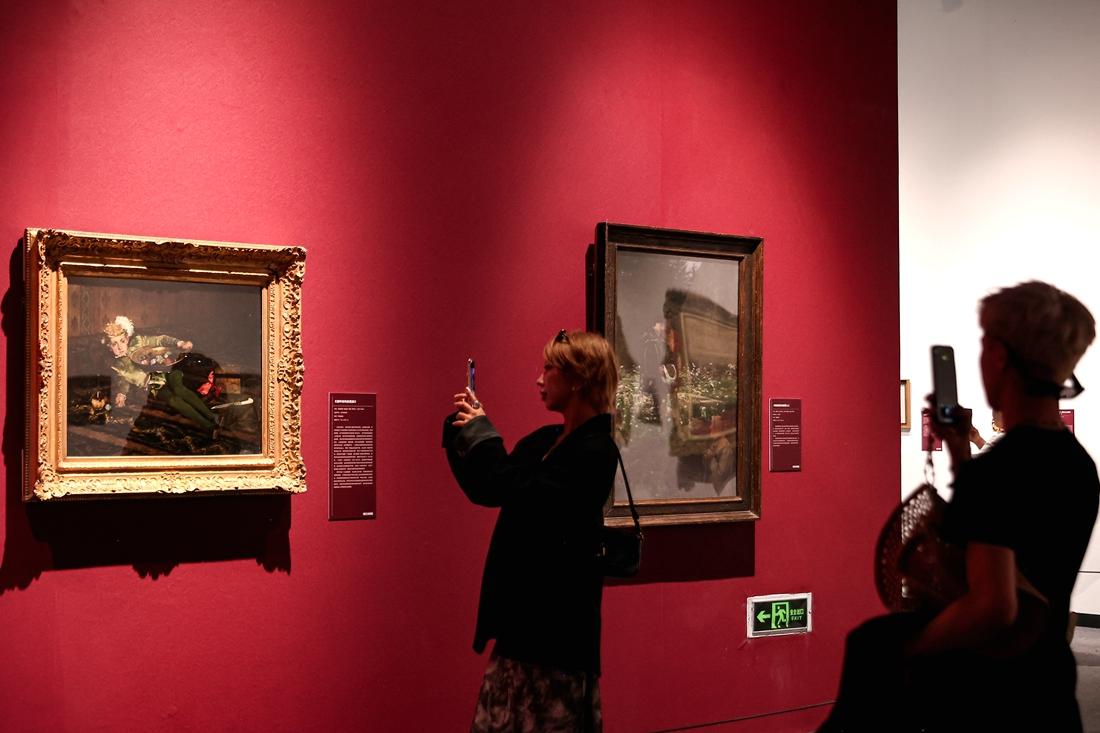European art exhibition opens in Yunnan
Featuring precious drafts by Michelangelo, preliminary sketches for frescoes by Raphael, and chalk drawings by Rubens, the exhibition “Chrono-tides—Diverse Practices of European Arts Across Centuries” recently commenced at the Yunnan Provincial Museum. The display brings together 95 pieces, including manuscripts, sketches, oil paintings, and sculptures, representing diverse schools and tracing the rich development of European arts from the Renaissance to the 20th century. Covering a wide spectrum of themes like portraits, genre scenes, and landscapes, the collection invites audiences on a captivating journey across centuries, offering a profound appreciation for the enduring legacy and innovative transformations of European painting.

Visitors to the exhibition “Chrono-tides—Diverse Practices of European Arts Across Centuries”
The exhibition is divided into four units. The Prologue traces the evolution of art styles such as Renaissance, Baroque, and Rococo, showcasing works by masters like Michelangelo, Raphael, Rubens, Van Dyck, and François Boucher, along with pieces from their apprentices and studios. The first unit delves into the collision and integration of Neoclassicism and Romanticism, two major art movements. By presenting works from key figures such as Neoclassical painter Ingres and Romantic artists Turner and Géricault, this section highlights the changes in social thought from the late 18th to the early 19th century.
The second unit explores the emergence of the Barbizon School and Realism in the mid-19th century. Through the works of artists like Camille Corot and Jean-François Millet, it showcases their engagement with nature and reality, responding to the social changes brought about by the Industrial Revolution and conveying a deep affection for nature, the land, and labor. The third unit illustrates the pivotal shift from academic tradition to modern art in Europe, spanning the late 19th to early 20th century. It features pieces from academic painters such as Delaroche and Bouguereau, Impressionists like Degas and Renoir, and Rodin, often hailed as “the father of modern sculpture,” among others. The fourth unit showcases the artistic practices of 19th-century Russian painters, including Ivan Shishkin and Isaac Levitan. These artists integrated the essence of European Realism with the unique realities of Russian society, offering profound reflections on themes of life, solitude, and hope.

Visitors to the exhibition “Chrono-tides—Diverse Practices of European Arts Across Centuries”
This exhibition will run until September 2, 2025.
Text by our staff correspondents
Translated by YNTA
Proofreading by Zu Hongbing